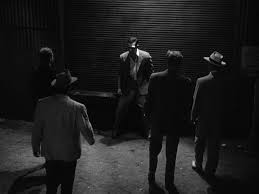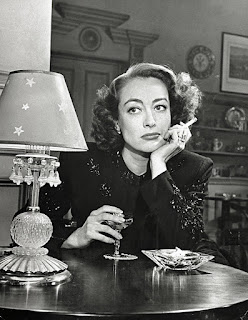Oh, 2020...
What can I write about you that hasn't already been written by others more poetic and pissed?It's been a real challenge to maintain my glass half-full disposition, but one thing I can say- 2020 has given me a lot of time to watch movies.
And since I love to overshare, here are the movies I watched in 2020 that gave me cinematic silver-linings during this cloudy year.
The Mank Effect
With most movie theaters closed for months on end, Netflix became one of the few entertainment companies that could toot their own horns about new movies. One of the most loudly tooted was David Fincher's Mank (2020) a bio-pic about notorious screenwriter Herman Mankiewicz and his contributions to cinematic hallmark Citizen Kane. I didn't watch Mank. Since I still haven't stopped foaming at the mouth over last year's bio-pic du jour Judy (2019), and considering all the hullabaloo Mank kicked up, I decided to save myself a conniption fit and just watched Citizen Kane.Citizen Kane (1941)
I get itchy about films that everyone loves. Probably because I want to be able to disagree without feeling like a leper- but in the case of Citizen Kane, its pedestal in the pantheon of greatest films ever made is secure with me. I would be a true moron to try and find something unique to say about Kane. Re-watching it, I was struck by how modern the film felt- from its flashback story framework, space-embracing shot set-ups, sly lampooning of the powerful, to performances that lurk in the realm of shadowy complication. Welles and Mankiewicz were not the first to employ any of these techniques- but Kane is a complete cinematic achievement and a clear influence on future filmmakers. A guy I had a socially-distanced face-chat date with informed me that there was no story in Citizen Kane. There was no second date.After all that, you might be surprised to hear that Citizen Kane is not my favorite Orson Welles film.
It's actually...
Touch of Evil (1958)
The opening shot of Touch of Evil is legendary. Its weaving, un-cut follow-shot of a car with a bomb in it and a Mexican drug enforcement official Michael Vargas (Charlton Heston. Yes. Charlton Heston) and his new wife (Janet Leigh) visually connects Vargas to the explosive crime that propels this story like a gliding dance.Touch of Evil isn't just dark, it's ugly. Welles seems to take impish glee in making each character in this morality play as unappealing as possible. Welles' crooked police detective Hank Quinlan is corpulent and filthy- grunting and lying his way through the case like an aging boar. Heston's Mexican makeup and Spanish accent (or distinct lack thereof) would be offensive even in 1958. Mercedes McCambridge is unrecognizable as a butch drug gang toughie. Even the lovely Janet Leigh (once again victimized in a motel) is tarnished when she makes a racial slur against one of her future tormentors.The shot that best exemplifies Welles' desire to not just paint the ugliness of fate with plot but with image occurs in a small shop where Vargas borrows the phone. In one of Welles' iconic deep-focus shots, in the background we see Vargas have a brief phone conversation while in the foreground a pitifully deformed blind girl sits quietly waiting for someone to show her a kindness. It's visually arresting to the point we stop paying attention to Heston's phonecall.The moral center of the film is a Mexican whorehouse madame/fortune teller played with ethnic disparity by Marlene Dietrich. She tells Quinlan, "Your future's all used up." But Welles' future was secure in Hollywood history- even if it's in a movie like Mank that seeks to un-seat his legacy.
But there's one other figure in the Citizen Kane trinity I'd like to talk about: Robert Wise.
The Set-Up (1949)
Robert Wise was the film editor on Citizen Kane. While critics fight over the contributions of Welles and Mankiewicz, Wise often gets left on the cutting room floor. But looking at Wise's subsequent work (he won four competitive Oscars without the presence of La Welles) it's clear that Wise had a highly developed cinematic eye. 1949 boxing drama The Set-Up is a perfect example of Wise's filmmaking talents that likely contributed to how Citizen Kane looked.The Set-Up starts with a flowing establishing shot that moves along a cul de sac where a boxing venue is across the street from the shoddy hotel room of tragic fighter Stoker Thompson (Robert Ryan in fine physical form) and his long-suffering wife (Audrey Totter). While the plot quickly sets up the set-up, this movie is more about the denizens of this cheap, no-winner world. From unkind close-ups of the bloodthirsty fight viewers, to the men who get their faces punched in for a living and the money-grubbing creeps who make paydays off of them, Wise paints this portrait in ugly shades- setting the stage for future boxing films like Martin Scorsese's Raging Bull (1980). This movie is proof that while Wise clearly worked well with Welles and Jerome Robbins (West Side Story (1961)), he was a visual master all by himself.
RIP Ennio Morricone (July 6, 2020)
They called him Maestro, and the title was well-earned. In his career of over 55 years, Ennio Morricone's soundtracks helped define the films they were a part of- indelibly so. While he utilized different instruments to match the genres and periods of the films he composed for, you could always tell when you heard a Morricone score.In honor of his passing in July of this year, here are my favorite movies that the Morricone touch made golden:
A Fistful of Dollars (1964)
The Battle of Algiers (1966)
The Good, the Bad and the Ugly (1966)
Once Upon a Time in the West (1968)
Two Mules for Sister Sarah (1970)
Days of Heaven (1978)
La Cage aux Folles (1978)
The Thing (1982)
The Mission (1986)
The Untouchables (1987)
Cinema Paradiso (1988)
The Hateful Eight (2015)
I Do Watch Movies That Were Made in This Century
Thanks to the magic of Netflix red-envelope DVD service (yes, I still use it!), I was able to watch some of the much buzzed-about films of the last year or so.
Here are the ones that gave me the feels:
The Lighthouse (2019)
Director Robert Eggers made a splash with atmospheric creeper The Witch (2015) despite the fact I thought it needed more black goat. His next film, The Lighthouse, though, made me sit up and salute. It's basically a female gothic film with two dudes stuck in a lighthouse. Willem Dafoe gets to spout the most beguiling Melville-ian monologues and Robert Pattinson shows his nautical heinie. Madness never looked so salty in black-and-white.Portrait of a Lady on Fire (2019)
As the song from Broadway's The Wild Party goes, "I need a good-natured, old-fashioned Lesbian love story!" Portrait delivers just that. Set in 18th Century Brittany, the familiar story d'amour about an artist who falls in love with the subject they are hired to paint is given a sapphic twist. The performances from Noemie Merlant and Adele Haenel as the star-crossed lovers are nuanced and simple- and the rocky, oceanside setting is worthy of the greatest landscape painter. Director Celine Sciamma achingly captures the longing of every artist (and probably non-artist) to render the fleeting fire of love so it can be re-lived again once it has gone.Booksmart (2019)
Speaking of the ladies, Kaitlyn Dever and Beanie Feldstein play two high school nerdettes who on the eve of graduation decide it's finally time to follow good ol' Auntie Mame's advice and "Live!" Director Olivia Wilde exploits and circumvents the tropes of the typical male teen "one more night" movie to create a funny and touching flick that reminds us all what it feels like to be that awkward age, dancing with the friends we thought we would have in our lives forever.Here's to your 2021 being full of movies that will live forever!

















































